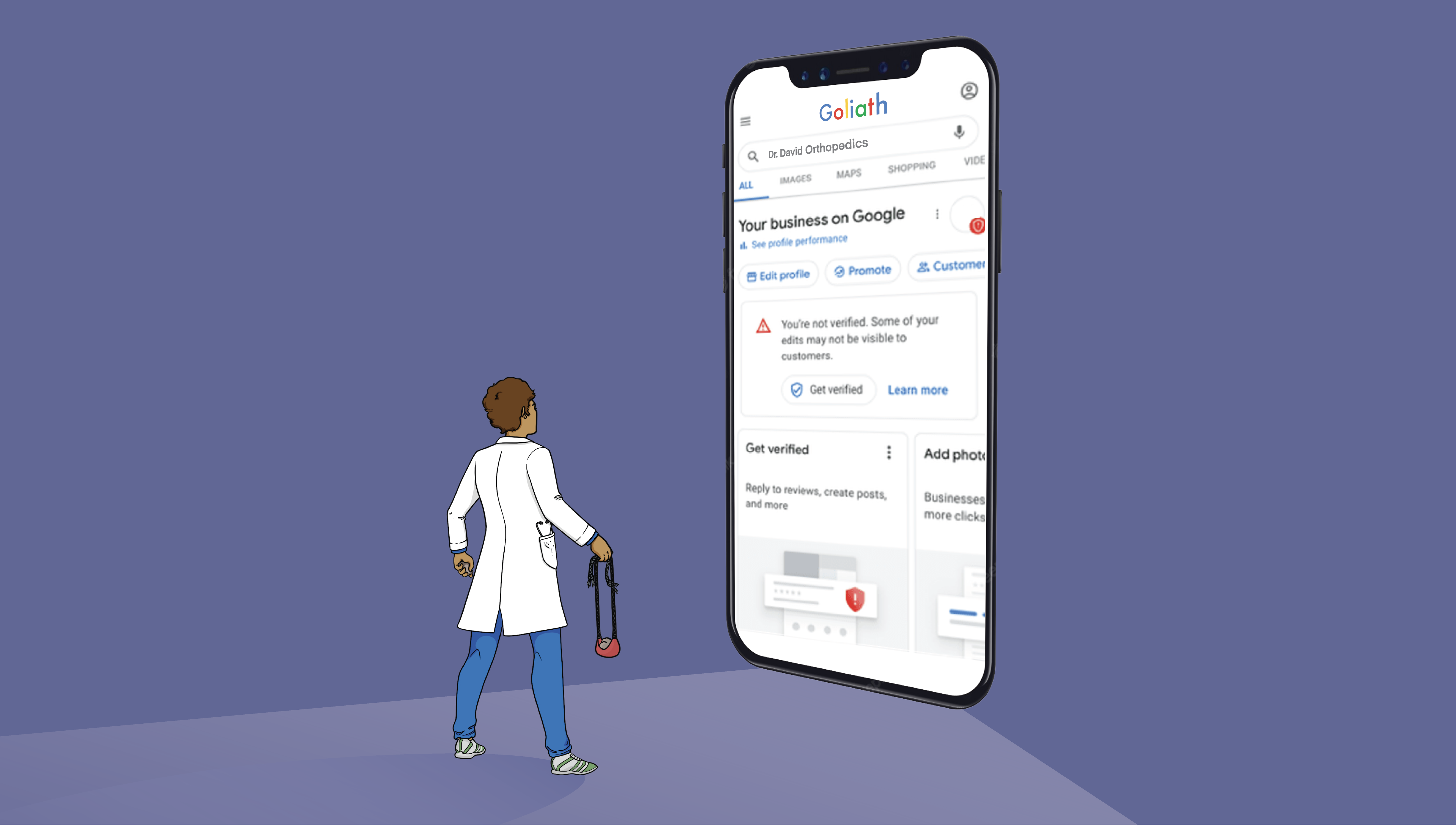Overcoming Big Marketing Challenges as an Orthopedic Practice
The key to running an orthopedic practice is a healthy stream of patients who need your services. That comes as a surprise to no one.
Choosing a doctor can be overwhelming for patients, so your practice needs to be doing everything possible to simplify the process for them. Marketing your practice in the right way helps your ideal patients find you, and the increased visibility helps your existing patients feel confident about their choice.
However, marketing in healthcare comes with a few challenges that other industries don’t experience. These unique problems make it hard to hire outside help or follow the advice of a non-healthcare marketing guru.
If these three challenges seem familiar, you’re not alone! These obstacles trip up a lot of orthopedic practices.
1. Measuring Marketing while Maintaining HIPAA Compliance
Maintaining HIPAA compliance is a way of life for healthcare practices. To other industry professionals who claim to provide the best marketing practices, it’s often a foreign concept.
Most modern marketers rely heavily on existing client data to capture new customers. Unfortunately, HIPAA prevents practices from using patient data in the same way.
That being said, there’s no reason to throw in the towel when it comes to tracking your marketing efforts. You can still measure marketing effectiveness in a HIPAA-compliant manner—it just requires healthcare specific tools and a strategic mindset.
Here are three keys to follow when measuring marketing in healthcare:
- Choose HIPAA-Compliant Marketing Partners – Ensure your agency or technology partners are HIPAA compliant and can track your marketing return on investment. It’s definitely possible, but often requires an EHR or Practice Management integrated experience instead of bolt-on software.
- Don’t Track on Login Screens – Only track patients and potential patients outside of authenticated sessions (login screens) on your website. We know it can be tempting to leverage this data to get ahead of the competition but the HIPAA violations and long term damage to your reputation just aren’t worth it. Treat the “authentication required” areas of your website as neutral zones for patient tracking technology.
- Settle For Data, Not Probabilities – Many marketing solutions assume that upticks in new patients mean their campaigns are working, even when there’s no direct way to identify whether those patients even interacted with their marketing. There are technology providers that remove the guesswork from healthcare-specific ROI calculations. They do this by integrating with your practice management system and clearly identifying the new patients attracted through specific marketing programs. These vendors are HIPAA compliant, will sign a Business Association Agreement (BAA) with you, and can provide data-driven reporting so you can base your tracking and conversion on actual patient appointments whenever possible.
2. Collecting Reviews & Raising Ratings
While word of mouth marketing may have helped many practices become successful in the past, digital ads far surpass this method in both effectiveness and reach. However, potential patients who see these ads will still want to perform research of their own.
You can make social media graphics, t-shirts, or hire a skywriter to tell your audience that you’re the best orthopedic practice to ever exist, but it doesn’t mean people will believe you.
So who will they believe?
 The average consumer reads 10 reviews before they feel they’re able to trust a business, so getting a high rating on Google and other platforms should be an ongoing goal for any orthopedic practice, along with a consistent flow of reviews.
The average consumer reads 10 reviews before they feel they’re able to trust a business, so getting a high rating on Google and other platforms should be an ongoing goal for any orthopedic practice, along with a consistent flow of reviews.
However, gathering reviews can be a challenge. People are primed to leave reviews for the restaurant they ate at last night, the dry cleaner that gave them the wrong order, or their latest vacation spot, but they often won’t leave your practice a review without prompting.
It doesn’t matter how much you spend on marketing or on building your website. But reviews are going to make or break your business every time. We recognize that this may make you hesitant about ever even soliciting reviews, but there’s less to be afraid of than you might think.
Data shows that the more patients you ask for reviews, the higher your ratings will be. Here’s why: without prompting, your few unhappy patients are motivated to leave reviews while your many happy patients are not. This creates a lopsided and skewed reputation that won’t accurately reflect the great care you provide. Requesting reviews from your patient base reverses this trend. It gets your silent majority of happy patients talking about you online.
Healthcare organizations often see large numbers of patients visiting their practices regularly. You shouldn’t expect your providers or office staff to remember to send review invitations to patients throughout their busy workday. It isn’t scalable and can often be very time consuming. Take the burden off of your staff and invest in a solution that offers automated review requests. They can be sent through text or email.
Even though you’ll still receive the occasional negative review, it isn’t the end of the world. By responding to these reviews, you can resolve patient concerns and show them how much you care.
3. Attracting the Right Patients
Consumers leave a trail of data every time they go online. But many healthcare marketers are unaware of the power of this data.
With access to large banks of collected consumer data, you can predict future behavior. That includes potential risk for specific medical conditions or needs for certain treatment types. While predictions are never 100% accurate, leveraging data allows practices to make much more educated guesses than their “gut” could ever manage. Once you’ve identified these ideal, potentially at-risk patients, you can set up ads targeted towards them and watch your revenue skyrocket.
While you can purchase this type of data yourself, it takes time to find the right information. Also expertise to know how to use it, and large amounts of money to acquire it. Instead, consider partnering with a third-party vendor that already has access to vast amounts of consumer data. They should also have healthcare-specific predictive models ready for you to use.
SocialClimb helps healthcare providers target and attract patients through improving their reputations, dominating local search, and growing the value of their medical practices. In addition to helping providers collect reviews and improve their rankings, our industry-leading platform uses deep analytics to automatically deliver targeted ads to attract profitable patients.
Ready to take your marketing to the next level? Contact us today.











